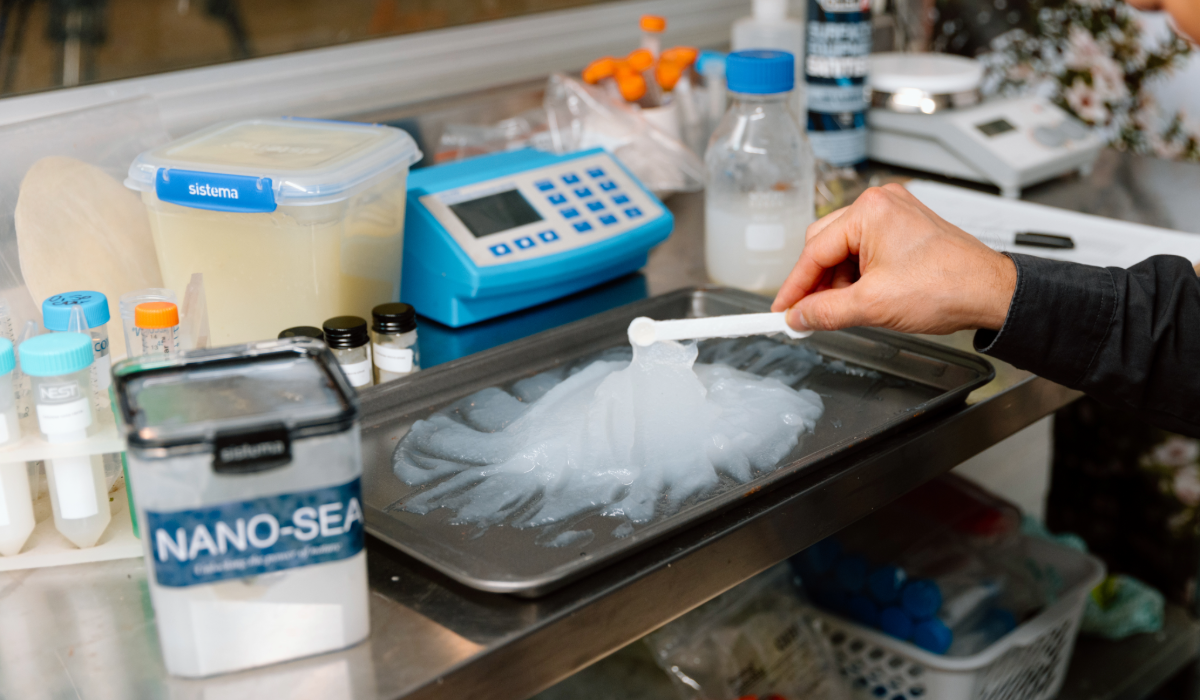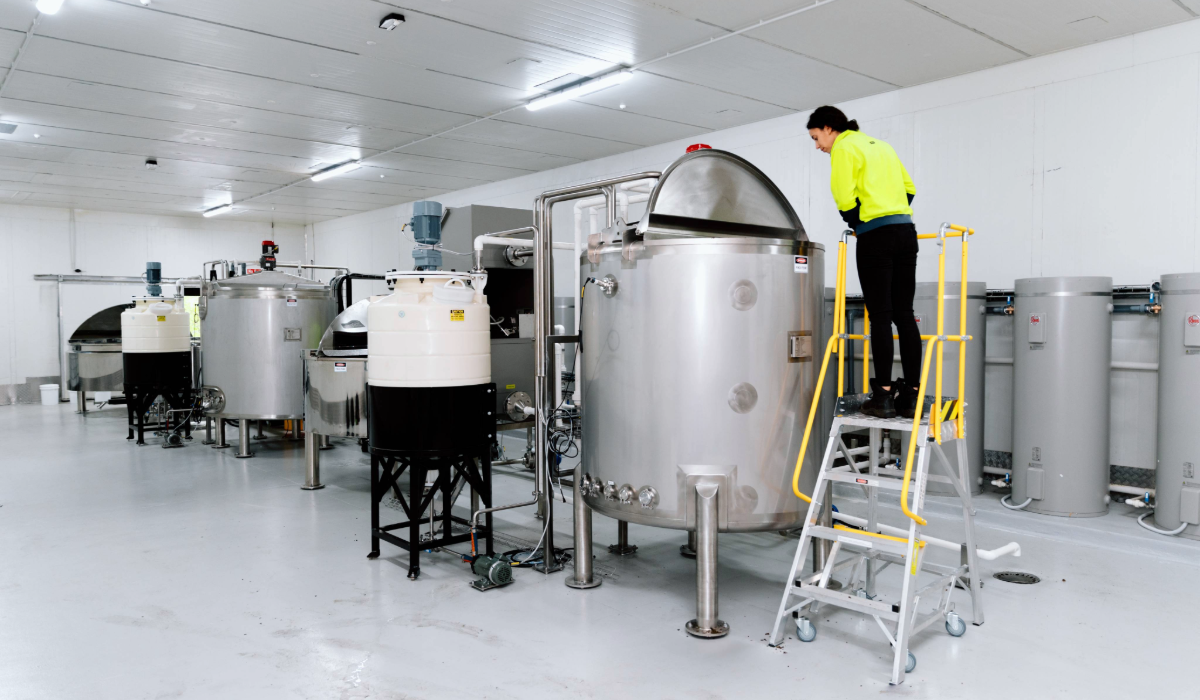New biorefinery will create global impact using seaweed

17 October 2025
The world’s first commercial seaweed nanocellulose biorefinery, opening in Paeroa today (October 17) will positively impact a range of industries while minimising waste.
The multi-million-dollar biorefinery, owned by family company AgriSea, will convert seaweed left over from the biostimulant production process into nanocellulose hydrogel that can be used for medical, agricultural, manufacturing and cosmetic purposes. Nanocellulose is a highly versatile material with exceptional properties, making it valuable in various applications. Most of the world’s nanocellulose is produced using chemically treated wood pulp. Now, AgriSea and the Bioeconomy Science Institute have collaborated to create this material from seaweed.
AgriSea chief executive Clare Bradley says seaweed offers a surprising advantage over traditional wood-pulp sources. “Its cellulose chains are up to four times wider and longer, giving the resulting hydrogel twice the thermal conductivity of plant-based equivalents. The extraction process uses non-aggressive chemicals compared to those usually used to produce nanocellulose, making it significantly more workplace and environmentally friendly.
“The finished material, an opaque gel, is stronger than steel and can absorb greater than 100 times its mass in water.”
The biorefinery can produce up to 1600kg of eco-friendly nanocellulose hydrogel a week. This hydrogel can be used for advanced wound dressings and drug delivery, in agriculture to improve seedling survival thanks to its water-retentive properties, and as a potential biodegradable performance material for adhesives, batteries and electronics manufacturers. Cosmetics companies also see it as a renewable cream base.
For AgriSea, the biorefinery is the next chapter in a 30-year journey producing seaweed-based bio-stimulants for agriculture. Until now, the fibrous residue from the company’s brewing process had limited value. By transforming it into nanocellulose hydrogel, the company is creating revenue streams while eliminating waste.
Backed by the Ministry of Business, Innovation and Employment to deliver regional jobs, the new plant is a flagship facility for New Zealand’s aquaculture sector. It can process a wide range of local seaweeds and has already trialled species from around the world – opening the door for New Zealand to take a leading role in global markets. The technology also creates multiple pathways for growth: the ability to contract-manufacture nanocellulose for other industry players, sell its own high-value materials into global markets or license the process to seaweed farmers in other countries. This flexibility strengthens New Zealand’s position as a leader in sustainable ocean-based innovation.
Florian Graichen, Bioeconomy Science Institute general manager for Forests to biobased products, says the biorefinery is a textbook example of New Zealand’s circular bioeconomy in action. “This partnership has led to a blueprint for ocean-based green technologies that could help global industry transition from fossil-derived materials, while minimising waste and revitalising local economies.
“The potential market is enormous. The global seaweed cultivation industry is projected to reach US$69.5 billion by 2034. The broader biorefinery market is forecast to expand at nearly 8% annually, topping US$392 billion in the next 10 years,” he says.
“This shows what can be achieved through collaborative research.”

